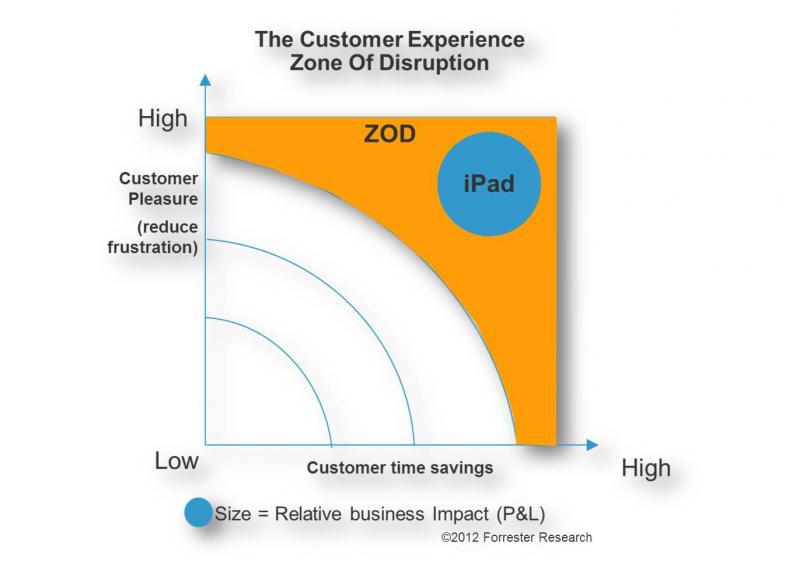Seek The Elusive Zone Of Disruption
As I analyzed examples of digital disruption I’ll be highlighting at the upcoming CIO Forum — “Leading Digital Disruption” — I was struck by the way in which every example could be tied to a shift in customer experience along two dimensions: pleasure and time.
Along the pleasure dimension, disruptive technologies significantly increase the pleasure (or reduce the frustration) derived from the customer experience. For example the iPad significantly increased my pleasure in browsing the web and engaging with brands I like through tailored apps.
And on the time dimension, disruptive technologies save customers significant amounts of time; time being the most precious commodity in the world. My iPad allows me to do many things much faster than I could before because it is easy-to-use and contains many apps which connect my lifestyle together.
 So I began to explore how CIOs might use this understanding to help shape the analysis of prospective disruptive strategies. What I came up with is the customer experience zone of disruption (or CxZOD for short — see illustration).
So I began to explore how CIOs might use this understanding to help shape the analysis of prospective disruptive strategies. What I came up with is the customer experience zone of disruption (or CxZOD for short — see illustration).
In the zone of disruption, the impact on pleasure and/or time is so great as to cause a disruptive force in the marketplace. When coupled with an assessment of potential market impact, this becomes an easy-to-understand visual model for comparing potential disruptive initiatives.
In my session at the forum, I’ll be exploring this model and showing how to use it to better understand existing technologies, such as mobile apps, and their potential to become disruptive.
What disruptive digital technologies would you place in the CxZOD? Post your comments below or Tweet #CXZOD
Next post: Which Social Metrics Have Value?
Previous post: Five Lessons From Dreamforce 2012